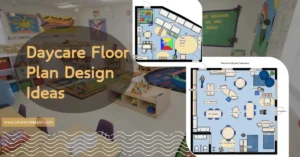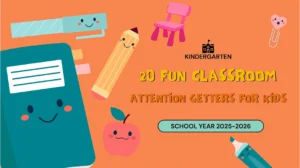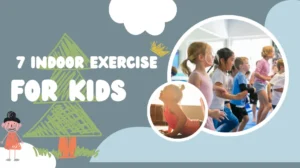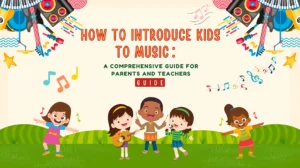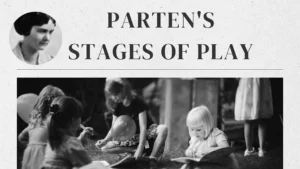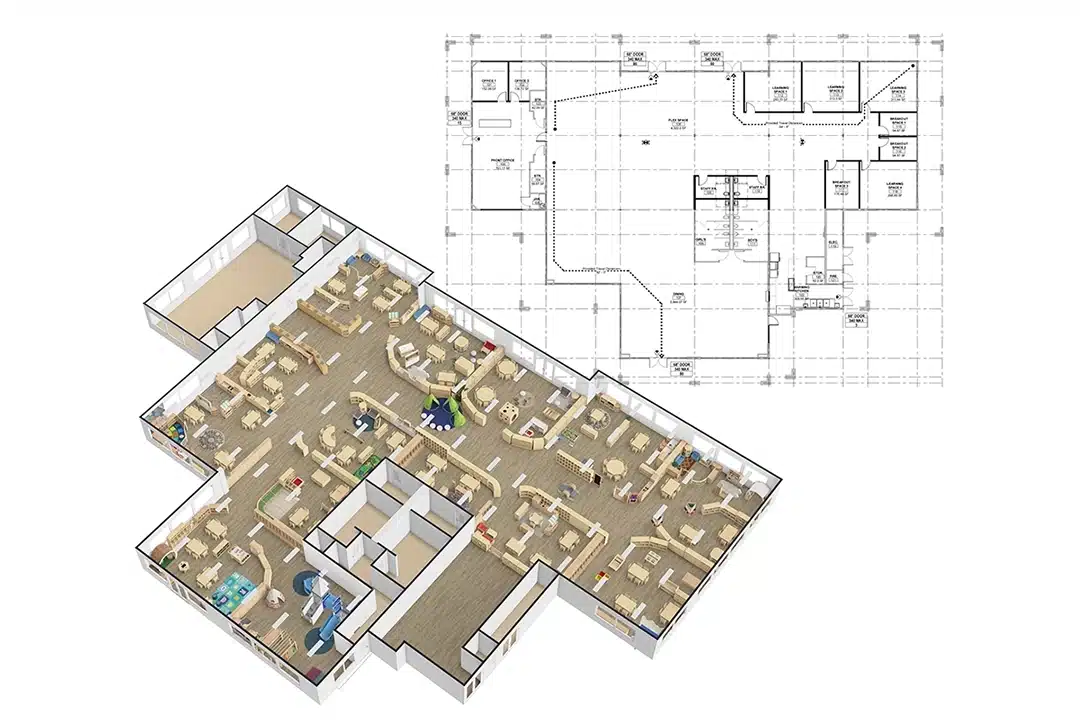Are you struggling with behavior management for preschoolers in your Montessori classroom? Do tantrums, interruptions, or resistance to routines disrupt your carefully prepared learning environment? Are you wondering how to guide behavior without using punishment or rewards? What are the most effective ways to help young children develop inner discipline while maintaining a peaceful classroom?
The key to effective behavior management for preschoolers lies in understanding their developmental needs and respecting their independence. In Montessori settings, we use clear boundaries, gentle guidance, and consistent routines to nurture self-control from within. This approach supports emotional regulation, strengthens focus, and builds respectful social interactions—all crucial skills for future academic and life success. Children learn to manage themselves not through force, but through empowerment. And when discipline aligns with their natural learning process, the results are calm, confident, and cooperative learners.
In this article, you’ll discover practical, Montessori-aligned behavior management strategies for preschoolers. These methods are respectful, child-centered, and effective in both classroom and home settings. Let’s explore how to create a calm, focused environment where young children can thrive.

What is Behavior Management for Preschoolers?
Behavior management for preschoolers is more than just correcting misbehavior—it’s about guiding young children toward self-discipline, emotional regulation, and respectful social interaction. In early childhood education, particularly in Montessori settings, behavior management is viewed as a proactive, positive process. It’s designed to help children understand limits, take responsibility for their actions, and develop the internal motivation to behave appropriately. This goes beyond simply saying “no” or issuing time-outs. Instead, it’s about fostering a supportive environment where positive behaviors are modeled, encouraged, and reinforced consistently.
In the preschool years—typically between ages 3 and 6—children are still developing their ability to communicate emotions, control impulses, and understand social expectations. At this stage, their behavior often reflects their developmental needs. They might interrupt because they’re excited to share, hit because they don’t yet have the words to express frustration, or resist transitions because they crave routine and predictability. Effective behavior management for preschoolers considers these factors and provides structure while respecting the child’s autonomy.
In Montessori environments, behavior management for preshcoolers is deeply tied to “freedom within limits.” Children can choose activities and move independently within a carefully prepared space where expectations are clearly defined. For example, a child may select any work on the shelf, but is expected to use it respectfully and return it when finished. If a child disturbs others, the teacher gently redirects them or invites them to a more suitable activity. This respectful approach encourages preschoolers to reflect on their actions and learn natural consequences.
Ultimately, behavior management for preschoolers is about building character, not control. It’s a long-term investment in helping young children grow into respectful, empathetic, and self-disciplined individuals. By understanding developmental stages, using consistent strategies, and reinforcing positive behaviors, educators and caregivers can build a foundation of emotional and social health far beyond the preschool years.

Benefits of Effective Behavior Management for Preschoolers
Implementing effective behavior management for preschoolers offers far-reaching benefits, both in the classroom and at home. Beyond simply preventing disruptions, it plays a central role in shaping how children view themselves, interact with others, and navigate their early educational experiences. In Montessori settings especially, behavior management is not about control—it’s about connection, understanding, and setting the child up for lifelong success. Let’s look at the deeper benefits of a well-structured approach.
Sets Expectations
Clear behavior expectations are essential for preschool-aged children, who are beginning to understand structure, social norms, and group dynamics. Effective behavior management for preschoolers helps define these expectations consistently and kindly. In a Montessori classroom, where freedom is balanced by responsibility, children thrive when they know what is acceptable and what isn’t.
By setting firm, developmentally appropriate boundaries, educators reduce confusion and anxiety in children. Preschoolers feel safer when routines are predictable and adult responses are consistent. They learn that certain behaviors—like speaking respectfully, cleaning up materials, or taking turns—are not random requests but community responsibilities. This helps children build trust in the environment and their caregivers.
Forms the Foundation for Social-Emotional Learning
Behavior management for preschoolers is tightly connected to developing emotional intelligence and interpersonal skills. Preschoolers don’t just need to be told what to do—they need to learn why certain behaviors matter. Effective management strategies integrate this learning by teaching empathy, cooperation, and emotional regulation.
For example, when a child grabs a toy from another, a Montessori educator might restore order and help the child name their feeling (“Were you feeling frustrated because you had to wait?”) and guide them to a more respectful solution. This process nurtures self-awareness and helps children begin to manage emotions constructively rather than act out impulsively. Over time, children in well-managed classrooms develop stronger conflict resolution skills, better patience, and a deeper understanding of how their actions affect others.

Creates a Conducive Learning Classroom Environment
A classroom where children feel respected, secure, and understood is a classroom where learning naturally happens. Effective behavior management for preschoolers creates an atmosphere of calm and order, two cornerstones of the Montessori approach. Disruptive behavior is minimized not by punishment but by prevention. Children who are engaged in meaningful, self-directed work are less likely to act out. Likewise, teachers who manage behavior proactively can focus on individualized instruction, group work, and observation, leading to better academic and developmental outcomes.
Moreover, peer relationships flourish when a class operates under explicit behavioral norms. Children become more attentive, collaborative, and curious. The teacher becomes less of a disciplinarian and more of a facilitator, guiding each child along their unique learning path in a peaceful, productive space.

Provides Strategies Families Can Use at Home
One of the lesser-known benefits of strong classroom behavior management for preschoolers is the positive influence it can have at home. When educators use consistent language, routines, and redirection techniques, families can model those same strategies in daily life. This alignment between school and home increases the child’s sense of stability and helps reinforce positive behavior across different environments.
For example, a parent might adopt the Montessori principle of offering limited choices (“Would you like to brush your teeth now or in five minutes?”) to give the child a sense of autonomy while maintaining structure. Or they may use calm, firm redirection instead of raising their voice—skills that often come directly from observing well-managed classrooms. Children benefit from a stronger support network when behavior management becomes a shared effort between home and school.
Promotes Positive Behavior
At its core, behavior management for preschoolers is about teaching, not punishing. The most effective systems don’t rely on fear or rewards but intrinsic motivation and mutual respect. Children naturally want to repeat those behaviors when they receive positive attention for their efforts, kindness, and cooperation.
Montessori classrooms encourage this through daily interactions. A teacher may acknowledge a child’s effort with genuine praise (“You concentrated for a long time on that puzzle—that shows great focus”) or invite children to reflect on their behavior (“How did you feel when you helped your friend today?”). These simple moments foster self-esteem, accountability, and a deep desire to do well, not just for a sticker, but because it feels good. That is the true goal of any behavior management strategy: raising children who don’t just behave well when watched, but who carry those values within themselves.

Classroom Management Strategies for Preschool
Effective classroom management strategies for preschool play a crucial role in creating a calm, productive, and nurturing learning environment. In preschool, children develop key social, emotional, and behavioral patterns that will follow them throughout their lives. Even the most engaging lesson can be lost in chaos without proper structure. However, educators can minimize disruptions and maximize growth with clear systems and child-centered practices in place.
Develop Clear Preschool Behavior Guidelines
Preschoolers thrive on clarity. They are still learning how the world works, and ambiguity can lead to confusion and behavioral outbursts. Establishing clear, age-appropriate guidelines from day one helps create a sense of order.
These guidelines should be simple, positively stated, and consistently reinforced. For example:
- Use kind words
- Walk in the classroom
- Take care of your materials
- Listen when others are speaking
When children understand the expectations, they are far more likely to meet them. Repetition is essential—rules must be reviewed daily, modeled by adults, and visually displayed in the classroom for reinforcement.
Children often learn behavior by observing. Adults in the environment—teachers, aides, and even older peers—must model respectful communication, emotional regulation, and responsibility. When adults follow the same guidelines they expect of children, credibility is built and compliance improves naturally.
Use Positive Language
The way we speak to preschoolers directly shapes their behavior and self-image. Instead of saying “Don’t run,” a Montessori educator might say “Please walk.” This shift from negative to positive phrasing is subtle but powerful—it tells the child what to do rather than what to avoid.
Positive language also supports emotional development. Statements like “I can see you’re upset, let’s take a deep breath together” validate the child’s feelings while gently guiding them toward appropriate expression. Over time, this fosters better emotional regulation and fewer behavioral issues.
Statements like “You’re being bad” or “Stop acting like a baby” are not only ineffective, but they can also damage a child’s sense of self. Instead, focus on the behavior: “Throwing toys isn’t safe. Let’s use our hands for building.” This approach maintains dignity while correcting the action.

Follow a Daily Routine
Routines bring structure, predictability, and a sense of security to young children. Preschoolers don’t have a strong concept of time, but they recognize patterns. Knowing what comes next helps them feel in control, which reduces anxiety and improves cooperation.
A well-managed classroom follows a rhythm: morning greetings, work time, group time, snack, outdoor play, etc. Each part of the day should have its flow and transitions. Teachers can use songs, clapping patterns, or gentle bells to signal change.
While routines should be consistent, they also need to accommodate the realities of young children. A child deeply engaged in an activity may need a few extra minutes before joining group time. Educators should balance maintaining flow and respecting each child’s needs.
Manage Transitions Carefully
Many behavioral problems occur during transitions. Moving from one activity to another—especially one the child enjoys—can trigger resistance, anxiety, or overstimulation. Effective preschool classroom management includes planning and preparing children for each change.
Use warnings before transitions (“In five minutes, we’ll clean up and go outside”), and always offer clear, visual cues. Some Montessori classrooms use sand timers, picture cards, or movement songs to signal change. These tools reduce stress and help children move calmly and confidently.
Rather than rushing children through changes, invite them to participate. For example, instead of saying “Clean up now,” say “Let’s each choose one thing to put away.” Giving children agency increases cooperation and smooths transitions naturally.
Teach Empathy and Other Social Skills
Behavior management for preschoolers isn’t just about stopping unwanted behaviors—it’s about teaching children how to live and learn together. Preschool is the perfect time to introduce empathy, turn-taking, problem-solving, and emotional expression.
Montessori classrooms approach this through real-life practice:
- Encouraging children to express feelings with “I” statements
- Inviting children to solve peer conflicts with teacher support
- Offering grace and courtesy lessons where children role-play social situations
This social-emotional education reduces behavioral challenges by giving children the tools to manage emotions, understand others, and resolve disagreements.

6 Behavior Management for Preschoolers Strategies
Understanding behavior management for preschoolers requires looking beyond surface-level actions. Preschool-aged children are not misbehaving on purpose; often, they are expressing unmet needs, processing emotions, or reacting to unfamiliar situations. In a Montessori-inspired approach, behavior is not something to control—it’s something to guide and teach.
Pay Attention to Their Developmental Phase, Not Just a Specific Behavior
Preschoolers are in a unique developmental phase. They are not small adults—they are learning impulse control, empathy, self-expression, and social awareness. When a child shouts, grabs, or runs indoors, it’s not always defiance—it may be developmentally appropriate behavior that needs redirection.
Effective behavior management for preschoolers starts with understanding these milestones. For instance, a three-year-old may have difficulty sharing because they are just beginning to understand the concept of ownership. Instead of reprimanding them for taking a toy, we observe their developmental phase and provide language: “You like that toy. Let’s ask for a turn when your friend is finished.”
By shifting our focus from “how do I stop this behavior” to “what does this behavior mean developmentally,” we reduce unnecessary conflict and create growth opportunities. Patience, observation, and age-appropriate expectations are essential tools.
Decode Their Behavior to Learn Their Needs
Children’s behavior is often a form of communication, especially when they lack the words to express their feelings. A child who suddenly becomes aggressive may be tired, hungry, overwhelmed, or disconnected. Instead of labeling a behavior as “bad,” we must act like detectives and ask: What is this behavior trying to tell me?
Montessori educators are trained to observe closely. A child who throws materials may be testing cause and effect, seeking attention, or expressing frustration at being unable to complete a task. In such cases, we don’t just remove the toy—we try to meet the underlying need. We might offer support with the task, provide sensory input, or give the child space and time to reset.
When we decode behavior, we build stronger relationships with children. They begin to feel understood and safe, reducing the frequency of challenging behaviors. This is especially powerful in group settings, where one child’s unmet needs can affect the entire classroom dynamic.

Treat Behavior as a School Subject
Just like reading or math, behavior must be taught. Children are not born knowing how to say “excuse me” or how to wait patiently. These are skills, and like all skills, they require consistent practice, modeling, and feedback.
One effective strategy is to integrate behavior management for preschoolers directly into the curriculum. During group time or transitions, teachers can introduce simple “grace and courtesy” lessons: how to offer help, interrupt respectfully, and express disagreement calmly. These short lessons build a toolkit that children can use throughout the day.
Instead of reacting to every incident as a disruption, we can view each as a teachable moment. A spilled drink becomes a lesson in cleaning up. A conflict over a toy becomes a lesson in problem-solving. Over time, this approach creates a classroom culture where learning how to behave is valued and normalized.
Walk Them Through Scenarios (Preemptively)
One of the most effective strategies for behavior management for preschoolers is proactively preparing them for what’s to come. Rather than waiting for behavioral issues to arise and reacting afterward, skilled educators anticipate challenging situations and guide children through them ahead of time. This method, often called social scripting or scenario planning, gives preschoolers the tools they need to make positive behavior choices before problems begin.
In effective behavior management for preschoolers, this preemptive approach is implemented through short conversations, visual cues, role-play activities, and reminders. For instance, before going outside, a teacher might say:
“First, we’ll line up quietly, then walk to the playground. Once we get there, we’ll take turns on the slide and use walking feet on the pavement.”
This script doesn’t just provide instructions—it gives children a mental roadmap they can confidently follow.
Preemptive guidance is invaluable in Montessori classrooms, where the emphasis on independence means children often make daily choices. Rather than correcting poor decisions after the fact, proactive behavior management for preschoolers helps children make respectful and appropriate choices from the beginning.
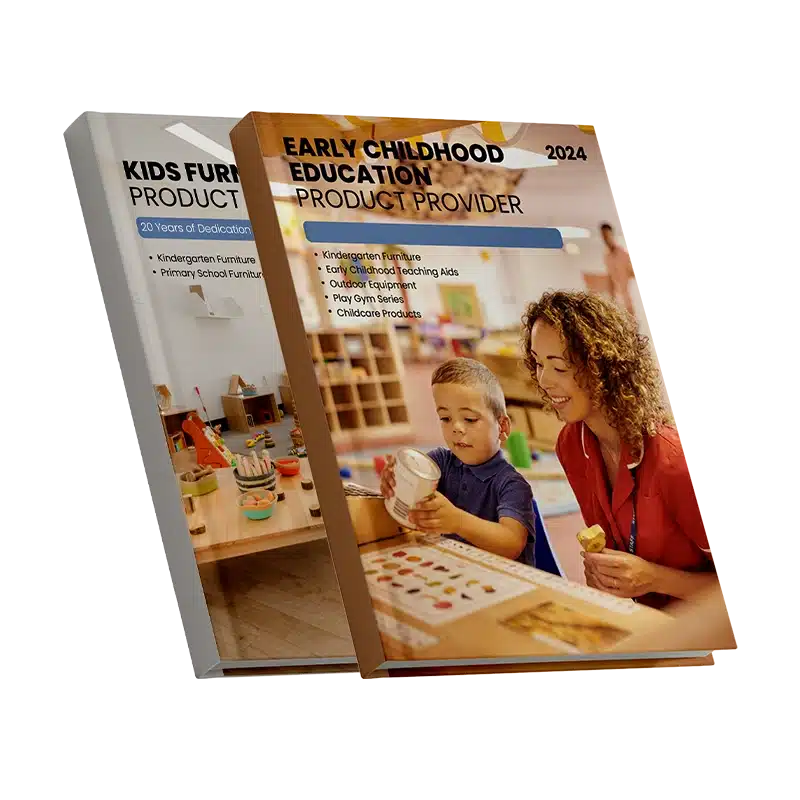
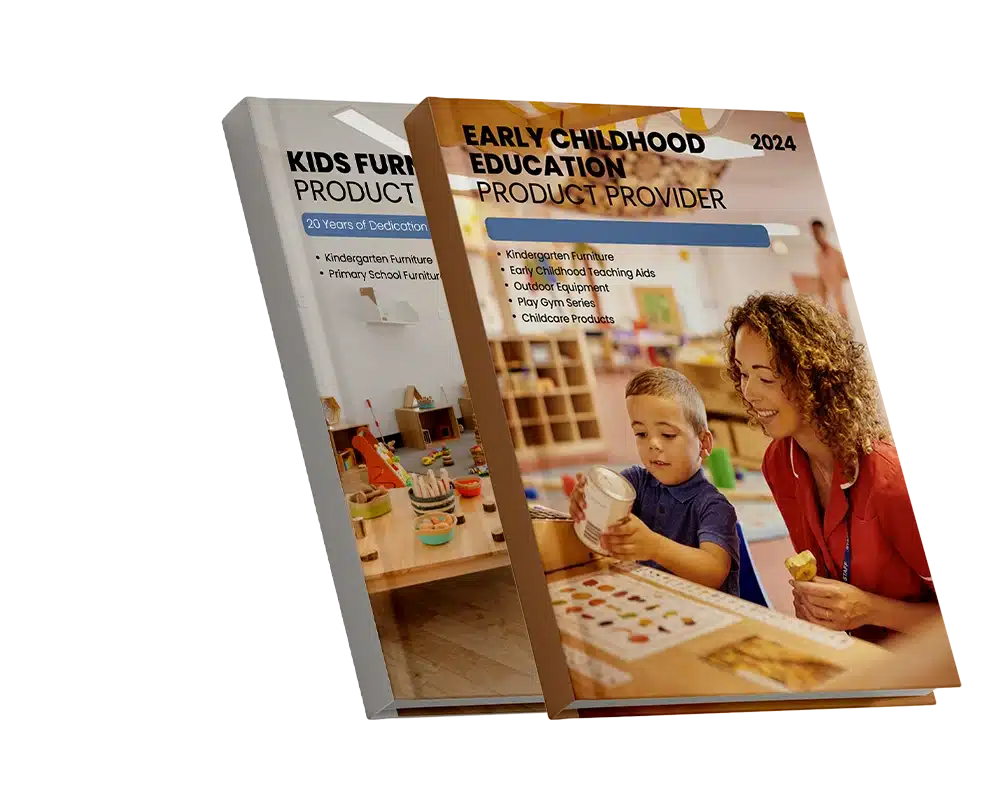
How Behavior Management for Preschoolers Starts with the Preschool Furniture?
When we think about behavior management for preschoolers, our first thoughts often go to classroom routines, teacher tone, or discipline strategies. But in reality, one of the most powerful tools for managing behavior starts with something more foundational—the preschool furniture itself. The design, layout, and furniture accessibility in a learning space directly influence how children move, interact, and behave.
Well-chosen preschool furniture helps create a structured yet flexible environment that encourages independence, reduces conflicts, and maintains a calm classroom. Below are several ways the right furniture choices directly support effective behavior management for preschoolers.
Promotes Independence and Reduces Frustration
Preschoolers are in a sensitive period when developing independence. When furniture is child-sized and easy to navigate, it allows them to function confidently without adult help. Chairs that fit their bodies, shelves they can reach, and tables they can work at comfortably promote self-sufficiency.
A child who can retrieve and return materials without struggling is less likely to become frustrated or disruptive. Instead of asking for help or giving up, they complete tasks independently, reinforcing self-esteem and positive behavior. Behavior management for preschoolers becomes easier when the environment encourages autonomy and reduces the likelihood of emotional outbursts caused by physical barriers.

Encourages Clear Boundaries and Spatial Awareness
The layout of preschool furniture defines the flow of the classroom. Open shelves, rugs for floor work, and designated work areas help children understand spatial boundaries—“This is where I work. That is where others work.” This simple structure prevents overcrowding, unnecessary conflict, and distraction.
For instance, using small individual tables for activities can help children focus and avoid the temptation to interfere with a peer’s work. Marked spaces reduce the need for verbal corrections because the physical space does much of the guiding. Effective behavior management for preschoolers often starts with how the environment communicates what’s expected.
Minimizes Transitions and Promotes Focus
Transitions are one of the most significant sources of behavioral issues in a preschool classroom. Children may act out during clean-up, lining up, or moving between group and individual work. Well-arranged preschool furniture can minimize these transitions by allowing children to flow naturally between activities.
For example, a reading corner near the work area invites children to transition quietly when they finish a task. Open shelves at eye level reduce time spent wandering. Instead of stopping one thing and starting another abruptly, children move with purpose. This minimizes disruptions and supports smooth classroom rhythms—key elements in behavior management for preschoolers.

Enhances Group Engagement Without Overstimulation
The right preschool furniture also helps create zones for group collaboration without overstimulating the class. Group tables with defined seating, carpet circles for story time, and communal art areas encourage shared activity in a structured way.
When children know where they’re supposed to be, what materials they’re allowed to use, and how to participate, they are less likely to interrupt or disengage. Consistent group areas allow teachers to manage collective behavior more easily while promoting cooperation and respect. Again, the furniture layout quietly does the work of behavior management for preschoolers without the need for constant redirection.
Preschool Classroom Behavior Management Ideas
Effective behavior management for preschoolers begins with thoughtful planning, age-appropriate strategies, and a classroom environment that supports independence and cooperation. At the preschool level, discipline isn’t about punishment—it’s about teaching children how to understand expectations, regulate emotions, and function respectfully in a group setting. Behavior guidance becomes a natural and integrated part of learning with the right ideas in place.
Several practical and proven behavior management ideas support a calm, focused, and respectful preschool classroom.
Establish a Consistent Classroom Routine
Preschoolers thrive on predictability. One of the best behavior management strategies is to create a clear daily routine that helps children know what comes next. A visual schedule with pictures and consistent timing for morning work, snack, circle time, and outdoor play reduces anxiety and minimizes transition resistance.
When children feel secure in their environment and understand the flow of the day, they are more likely to cooperate and self-regulate. A stable routine allows for smoother transitions, which are often hot spots for disruptive behavior.

Create a Behavior-Friendly Classroom Layout
Physical space plays a big role in behavior management for preschoolers. A well-designed classroom with defined learning areas (e.g., reading corner, sensory area, art station) gives children structure without needing verbal reminders. Clear walkways, low shelves, and accessible materials encourage independence and minimize frustration.
Consider using rugs to define individual workspaces or group areas. Visual boundaries help children respect personal space and stay focused, reducing conflicts and helping them feel more in control.

Use Positive Reinforcement and Specific Praise
Instead of focusing on correcting negative behaviors, highlight and reinforce the positive ones. Praise should be specific and related to the behavior you want to see more of. For example:
- “You waited your turn so patiently—thank you.”
- “I love how gently you’re handling the books.”
This type of recognition encourages children to repeat positive behaviors because they understand exactly what they did right. Positive reinforcement is one of the most effective tools in any behavior management for preschoolers strategy.
Implement Visual and Verbal Cues
Preschoolers often respond better to visual or nonverbal signals than to repeated verbal instructions. Use visual cue cards, timers, or hand signals to communicate expectations. For example, holding up a “quiet” card or dimming the lights can signal it’s time to listen without raising your voice.
These cues reduce teacher frustration and help children shift behaviors quickly. Over time, they internalize the signals and manage their behavior independently.
Encourage Child Participation in Rules and Problem Solving
One often overlooked but highly effective strategy in behavior management for preschoolers is actively involving children in creating classroom rules and behavior solutions. When young children feel a sense of ownership over their environment, they are more likely to respect it. Instead of seeing rules as imposed by adults, they begin to understand them as shared agreements supporting the group.
Start by inviting children to discuss what makes the classroom feel safe, fair, and happy. Ask open-ended questions such as:
- “What helps everyone have fun and learn together?”
- “How can we take care of our materials and our friends?”
By trusting children to help create and uphold the rules, we cultivate a classroom culture of respect, responsibility, and shared purpose. In turn, misbehavior decreases—not because of fear of punishment, but because children truly understand and value the behavioral expectations they’ve helped to shape.

Behavior Management Plan for Preschool
Creating a clear and consistent behavior management plan for preschool is essential for building a calm, structured, and productive learning environment. Children are developing critical emotional, social, and behavioral skills at this early age, and how we guide them shapes not only their day-to-day classroom experiences but also their long-term development. A well-designed plan helps children understand expectations, feel secure, and thrive individually and in groups.
An effective behavior management plan for preschool must be proactive, developmentally appropriate, and grounded in positive reinforcement rather than punishment. At its core, the goal is to teach children how to behave, not just what not to do. This is especially important in Montessori and Reggio-inspired environments, where respect for the child, freedom within limits, and self-regulation are key principles.
Core Components of a Behavior Management Plan
A successful behavior management plan usually includes the following essential elements:
- Clear Behavior Expectations: Children should know what behaviors are acceptable in the classroom. These expectations should be stated in simple, positive language—such as “use gentle hands,” “walk indoors,” or “take turns with friends.” These rules should be visual, repeated daily, and consistently reinforced by all adults in the environment.
- Routine and Structure: Predictability helps children feel safe and reduces anxiety. A consistent daily schedule allows children to anticipate what’s next, reducing the chances of emotional meltdowns. Visual schedules, timers, and songs for transitions can make structure fun and easy to follow.
- Observation and Individualization: Every child is different. Some may struggle with impulse control, others with communication or emotional regulation. Teachers should regularly observe behavior to understand each child’s needs. This allows for individualized strategies—like offering sensory breaks or one-on-one emotional coaching—that support positive behavior.
- Positive Reinforcement: Encouraging good behavior is more effective than punishing poor behavior. A strong behavior management plan for preschool includes systems recognizing effort, cooperation, and self-control. This can be verbal praise (“You used kind words—great job”), classroom celebrations, or responsibility-based privileges.
- Logical Consequences: When consequences are needed, they should be logical and related to the behavior. For example, if a child throws blocks, they may lose access to the block area temporarily. The consequence teaches responsibility without shame or fear.


Supporting Consistency Across Environments
Consistency is the backbone of effective behavior management for preschoolers. All teachers, assistants, and caregivers should apply the behavior plan similarly. This unified approach helps children know what to expect and builds trust in the adults guiding them.
Engaging families in the process is equally important. Sharing the behavior management plan with parents creates alignment between home and school. Children receive clearer, stronger behavioral messages when strategies like positive reinforcement, calm redirection, and consistent routines are mirrored at home.
A well-structured behavior management plan for preschool doesn’t just prevent disruptive behavior—it empowers children to succeed socially and emotionally. With clear expectations, nurturing guidance, and an environment designed to support their development, preschoolers can flourish as responsible and respectful learning community members.

Important Considerations for Effective Behavior Management for Preschoolers
Creating a practical approach to behavior management for preschoolers involves more than simply applying rules and expecting compliance. Preschool-aged children are still developing emotional awareness, communication skills, and self-control. Managing their behavior requires planning, empathy, and developmentally appropriate strategies. Below are several critical considerations every educator and preschool director should consider when designing or evaluating a behavior management plan.
Understand the Developmental Stage of Preschoolers
Before implementing any strategy, it’s essential to understand where preschoolers are in their developmental journey. At this age, children are naturally impulsive, curious, and still learning to regulate emotions. What might seem like defiance is often a sign of frustration, overstimulation, or lack of understanding.
When planning behavior management for preschoolers, keep the following developmental characteristics in mind:
- Limited impulse control is normal and expected.
- Emotional expression often comes before verbal reasoning.
- Children need frequent repetition and reinforcement of rules.
- Play is a primary form of learning and expression.
Tailoring your expectations and responses to the child’s age and stage helps reduce unnecessary conflict and supports a more nurturing learning environment.
Focus on Teaching, Not Controlling, Behavior
Behavior management is not about control—it’s about education. Preschoolers need to be taught what positive behavior looks like and how to achieve it. Rather than punishing undesirable behavior, educators should use redirection, modeling, and positive reinforcement to teach new skills.
Effective techniques for teaching behavior include:
- Role-playing scenarios (e.g., how to ask for a turn, how to respond when upset).
- Grace and courtesy lessons in small group settings.
- Positive reinforcement through specific praise (“You waited so patiently!”).
- Calm, respectful redirection when behavior veers off track.
When we treat behavior as a subject to be taught, rather than a problem to be fixed, we empower preschoolers to take ownership of their actions.


FAQs
1. What is the difference between discipline and behavior management for preschoolers?
Discipline is often reactive and focused on correcting misbehavior, while behavior management for preschoolers is proactive and educational. It involves creating a structured environment, setting clear expectations, and guiding children toward self-regulation. The goal is not to punish, but to teach appropriate behavior through consistent modeling, positive reinforcement, and supportive redirection.
2. Is it effective to use reward systems for behavior management in Montessori classrooms?
Montessori philosophy generally discourages external rewards like stickers or prizes. Instead, the focus is on intrinsic motivation—helping children take pride in their choices and actions. That said, some educators may use simple visual cues or acknowledgment systems to reinforce positive behavior, but these should align with the values of independence and internal growth central to behavior management for preschoolers.
3. What role do transitions play in preschool behavior problems?
Transitions—moving from one activity to another—are often a major source of behavioral issues. Sudden changes can cause anxiety or resistance. To support smooth transitions and enhance behavior management for preschoolers, educators should use verbal warnings, visual cues, or songs to prepare children. A predictable routine helps children shift their attention with less stress.
4. How can preschool educators support children with frequent behavioral challenges?
Children with recurring behavioral challenges often need more individualized observation and support. Teachers should identify possible causes (sensory needs, communication difficulties, emotional triggers) and implement tailored strategies like quiet areas, movement breaks, or visual supports. Consistent, calm responses paired with empathy are essential tools in behavior management for preschoolers with more intensive needs.
5. Can parents and teachers use the same behavior management strategies at home and in school?
Yes, aligning behavior management techniques between home and school provides consistency, which is especially important for preschoolers. Sharing routines, language, and behavior expectations helps the child understand boundaries more clearly. Many successful behavior management for preschoolers plans include family engagement to ensure the child receives the same guidance and support across environments.
Conclusion
Effective behavior management for preschoolers is not about control—it’s about creating a thoughtful, structured, and respectful environment where children can grow emotionally, socially, and academically. Each classroom component plays a critical role, from using child-sized furniture that promotes independence to modeling empathy, establishing clear routines, and involving children in rule-making. When educators and caregivers align their strategies with the developmental needs of young children, behavior guidance becomes part of the learning process, not a separate or punitive system. Preschoolers can thrive as self-directed, respectful learners with the right tools, consistency, and environment.



